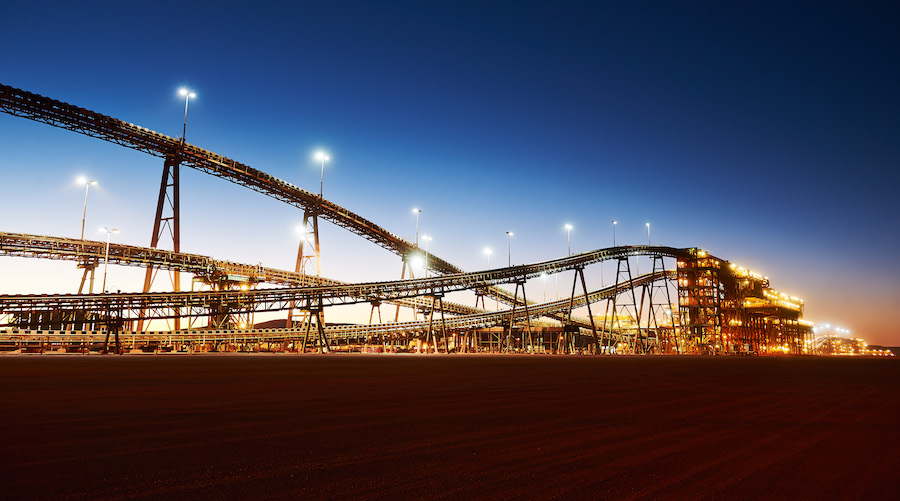BHP’s iron ore profits show why Beijing wants to talk the price down

(The opinions expressed here are those of the author, Clyde Russell, a columnist for Reuters.)
Tucked away on page 38 of BHP Group’s 39-page presentation of its latest results is as good an explanation as any as to why China desperately wants to talk down the price of iron ore.
Under the somewhat bland title of “Key underlying EBITDA sensitivities”, BHP reveals that every $1 change in the price of iron ore leads to a change of approximately $119 million in the underlying earnings for the current fiscal half year ending June 30.
BHP, the world’s biggest mining company and third-biggest producer of iron ore, supplied 129 million tonnes of the raw material used to make steel in its fiscal first half ended Dec. 31. It expects to mine much the same volume in the current half.
Its average realized price per tonne of iron ore in the half ended Dec. 31 was $113.54. That was down from $158.17 in the previous six-month period but still resulted in the iron ore division reporting underlying EBITDA of a somewhat less bland $11.15 billion.
Iron ore prices have had a strong start to 2022, with the spot price for delivery to north China, as assessed by commodity price reporting agency Argus, hitting a high of $153.55 a tonne on Feb. 10.

The price has since retreated to end at $139.65 a tonne on Wednesday, partly as a result of Beijing’s renewed efforts to talk it down. At these prices, BHP’s iron ore profits in the current half will only swell.
China’s state planner on Feb. 9 issued a second warning so far in 2022 to the iron ore market, warning participants that they “should not fabricate or publish any false price information and should not drive up prices.”
The National Development and Reform Administration (NDRC), together with the market regulator, will hold what it called a “reminding and warning” symposium with domestic and foreign iron ore traders on Thursday, Reuters reported on Feb. 15.
This meeting can be seen as part of Beijing’s efforts to take some heat out of iron ore prices, reflecting the view that the price is at unsustainably high levels and not justified by fundamentals.
Certainly, BHP’s estimate of an increase in earnings before interest, taxes, depreciation, and amortisation (EBITDA) of $119 million in the current quarter for every $1 increase in the price of iron ore does provide Beijing with some ammunition.
It’s hard to know exactly what price Beijing would see as fair and sustainable for iron ore, but it’s likely to be closer to around $80 a tonne than the current level.
If an average price of $130 a tonne is assumed for the first half of 2022 – which doesn’t seem unreasonable given the spot price’s performance so far – it implies that a company like BHP is making $50 a tonne more than what Beijing might deem reasonable.
That $50 would translate into $5.95 billion in extra EBITDA in the six months to June 30, expressed using BHP’s “sensitivities”.
This calculation is of course merely a theoretical musing. But it does show how much money is flowing to BHP from China’s steelmakers that Beijing might regard as unjustified profits.
How low can iron ore go?
The key question for China, which buys about 70% of global seaborne iron ore, is how much lower can it drive the price of the material, especially in the light of fairly strong supply and demand fundamentals.
It’s not the fault of the miners that China is buying robust volumes. Refinitiv estimates imports in the first two months of 2022 will be around 180.5 million tonnes, while commodity analysts Kpler are even more bullish, estimating imports of around 200 million tonnes.
There is also a widespread market view that Beijing will ramp up stimulus spending in the first half once the Winter Olympics are concluded, a move that would be bullish for steel and iron ore.
Another potential bullish factor is on the supply side, with the cyclone season underway in Western Australia state, home to the bulk of production in the world’s biggest iron ore producer.
The Australian Bureau of Meteorology has predicted an average to an above-average number of cyclones, raising the risks of disruptions to mining and transport operations in Western Australia.
(Editing by Kenneth Maxwell)
{{ commodity.name }}
{{ post.title }}
{{ post.date }}

Comments